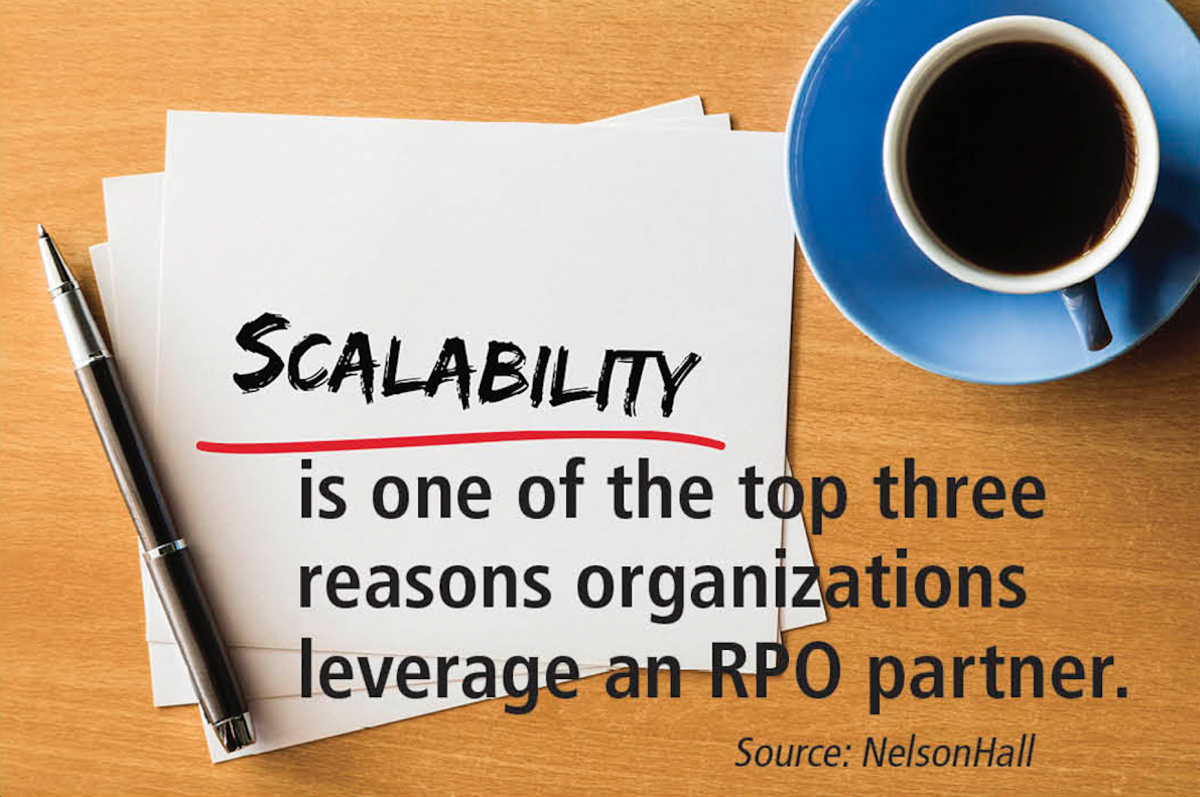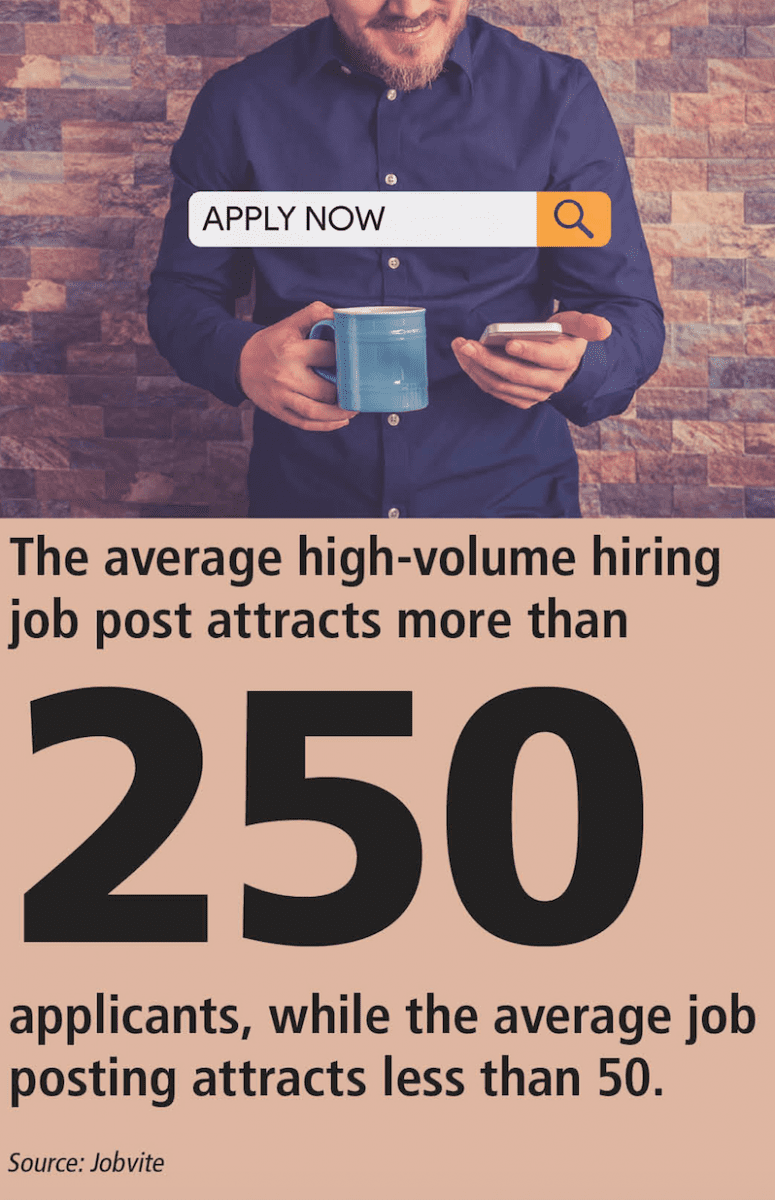How today’s technology helps tackle the challenges of high-volume hiring.
By Debbie Bolla
Hiring 25,000 people for a short period of time, in a short period time is no easy feat, but it’s a reality for many organizations. Industries including retail, hospitality, outdoor services, and security are innately prone to high-volume hiring periods in which organizations need to ramp up staff quickly and efficiently. Faced with a large hiring volume, these organizations are seeking both quantity and quality.
“These workers have to be high quality because they often interact with customers,” says Adam Godson, vice president of global technology solutions for Cielo, a strategic recruitment process outsourcing (RPO) partner. “With unemployment at four percent, the ability to hire a lot of people in short amount of time is becoming more challenging.”

“According to NelsonHall RPO research published in January 2018, scalability -the ability to scale resources up and down based on organization’s hiring patterns -is one of the top three reasons organizations outsource to an RPO specialist,” he adds.
In addition to working with a partner, the use of technology, AI, and machine learning can help conquer many of the challenges faced by high-volume hiring industries. “Technology, including RPA and AI, plays an important role in providing recruiters and hiring managers with much better information to make decisions,” says Brager.
He says technology can aid in several key ways:
- by analyzing profiles on social networks to determine interest;
- by showing which types of job descriptions generate the best response and linking that data to the quality of the candidates who were ultimately hired; and
- by assessing the best-fit applicants and the ones most likely to stay and be productive.
How else can AI and machine learning improve high-volume hiring practices? Technology can tackle these challenges:
Challenge: Getting the right number of candidates at the right time.
Organizations that have high-volume periods aren’t always prepared to staff accordingly and may find it difficult to predict the number of applicants they need. The pressure is on when a large number of candidates is needed.
How technology can help: Programmatic advertising and sourcing engines.
“A programmatic advertising engine is connected to every source you can imagine, including job sites like Indeed and Monster, and media sites like Google and Facebook,” says Godson. “It can be set up to push listings to a large reach of media really quickly and based on need.”
The key is that this type of technology can respond to the number of candidates in an organization’s pipeline and scale up or down based on need. For example, if an organization has to hire 10 people by Friday, and has already hired six people by Wednesday with 10 more interviews scheduled and 30 candidates in the pipeline, the technology will hold off on additional advertising. But if the candidate target is 100, the system will adjust. “Programmatically, HR will always have the funnel filled,” says Godson. “This really helps HR meet their goals.”

The applicants are out there: Recent research from Jobvite reports that the average high-volume hiring job post attracts more than 250 applicants while the standard job post attracts less than 50. But for organizations, more is often more -especially when applicants don’t align to the job position.
How technology can help: Assessment scores.
AI can help HR teams assess candidates by providing a ranking that aligns with the candidates’ probability of success. Ranking candidates can help HR professionals predict better-fit candidates for hire, and provide a fuller understanding of the talent pipeline.
“Job-fit scores work really with programmatic engines to understand the probability of hitting a goal,” says Godson. “Programmatic engines understand the quality of candidates in real time in order to adjust outreach.”
Godson says there’s always some risk relying on a job score, but more and more research is finding that machine learning algorithms are typically very accurate.
Challenge: Keeping candidates engaged.
Equally important to finding the right candidates is keeping those that are interested engaged throughout the entire hiring process. Tedious high-volume hiring processes can often be the cause of candidate drop-off and interview no-shows.
How technology can help: Having touch points catered to candidates.
Having a process that is 100 percent mobile is a good place to start, Godson says. Eight percent of job applications come through smartphones, and applicants desire a hiring process that is login free and can be completed in seven minutes or less.
Automation plays a big role in achieving this, but an added service layer can help drive results. If organizations confirm self-scheduled interviews with a phone call and offer a few minutes to answer questions, interview show rates will increase, says Godson.
“Full chatbot-based solutions can be a little too impersonal,” he explains. “But when there’s a social contract between the hiring organization and the candidate, interview no-show rates are impacted pretty significantly.”














